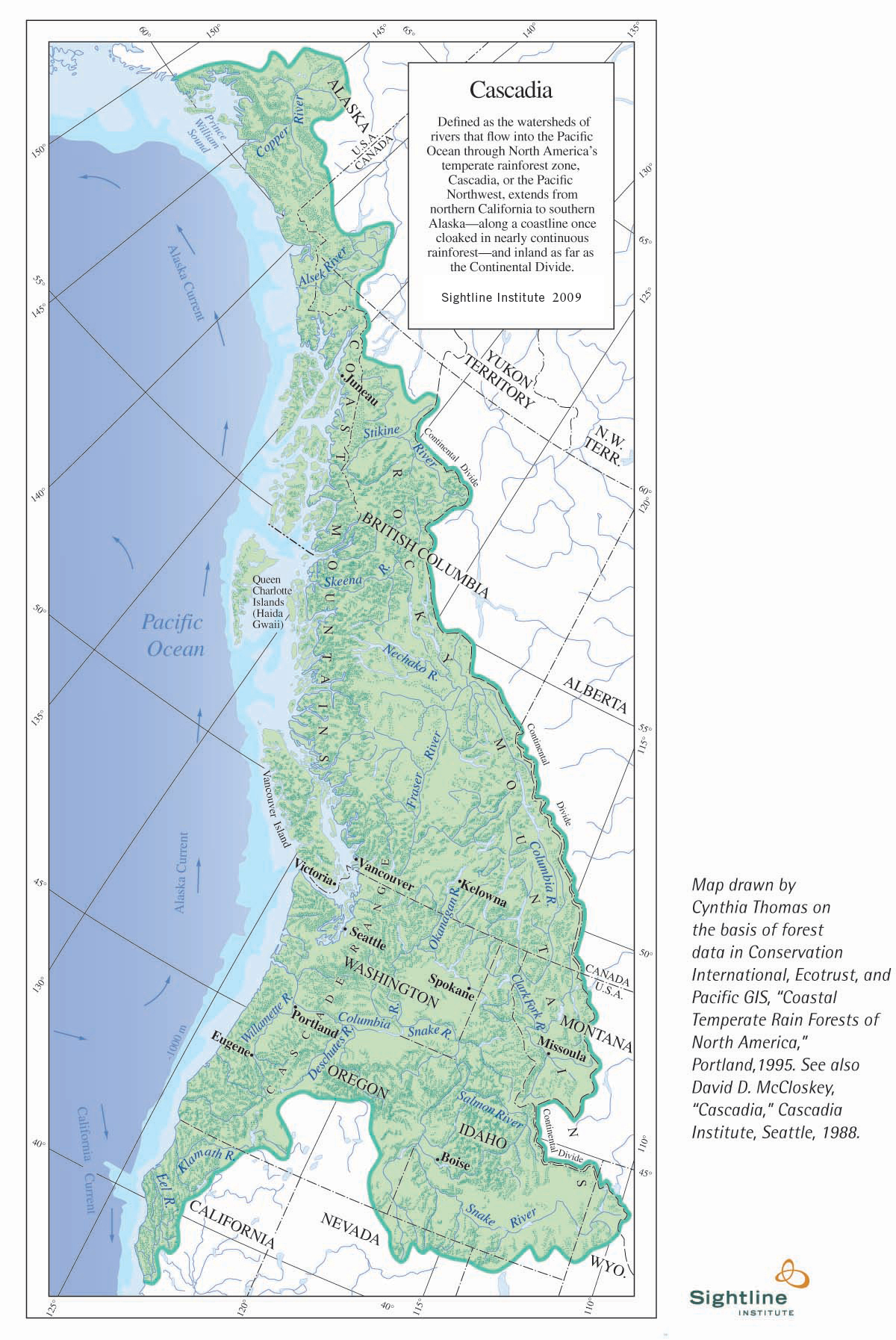
What is Cascadia?
Cascadia is a land mass that includes Mount Shasta in Northern California at the southern border, lands within the Columbia River watershed to the Pacific Ocean in the West, east to the Tetons and Yellowstone National Park, and north along the Continental Divide to Stikine Plateau and Kenai Peninsula. Cascadia stretches from 40 to 60 degrees north latitude and from 110 to 140 degrees west longitude, a total of 1,942,491 square kilometers (approximately 750,000 square miles). It includes animal life such as the runs of the King or Chinook Salmon, common fauna such as the Western Red Cedar, Redwood, and Douglas Fir, and the Cascade Volcanic Arc, a network of nearly 20 major volcanoes, among a total of over 4,000 separate volcanic vents. Additionally, Cascadia supports an emerging culture that demonstrates its dedication to bioregional sustainability through handcrafting goods, increasing ecological awareness, advocating for social equity, and participating in active lifestyles.
